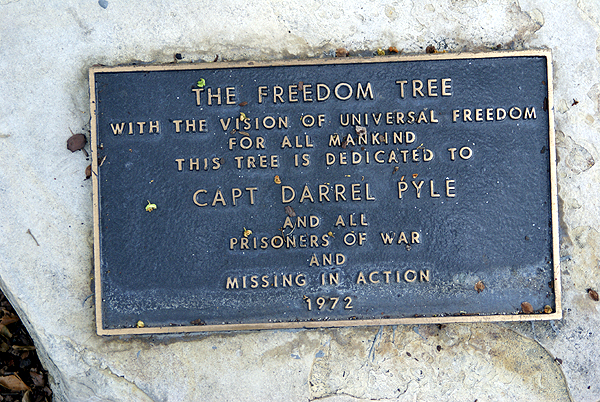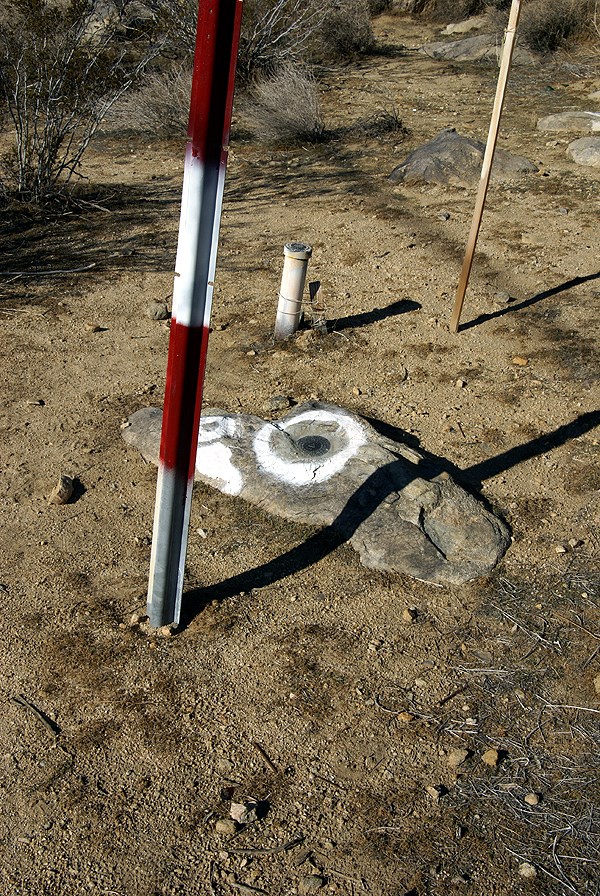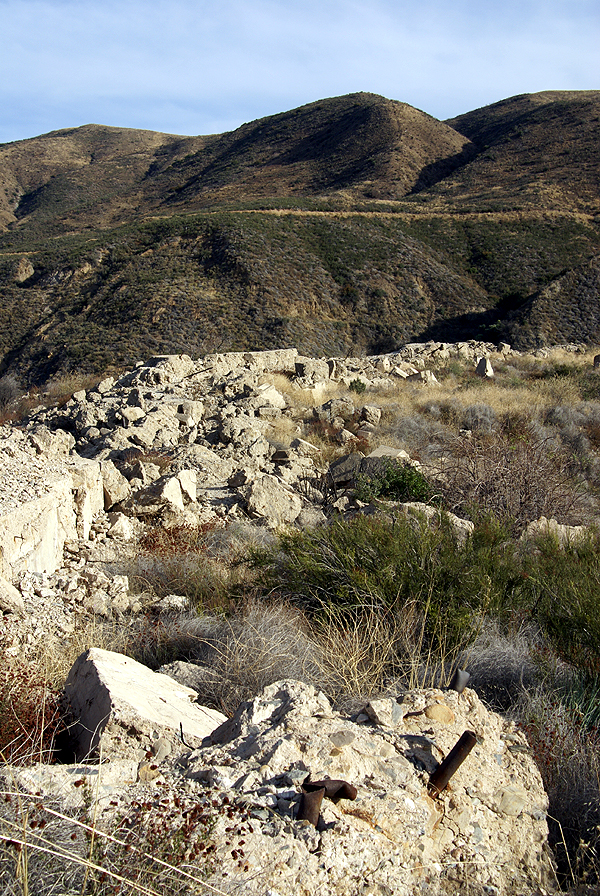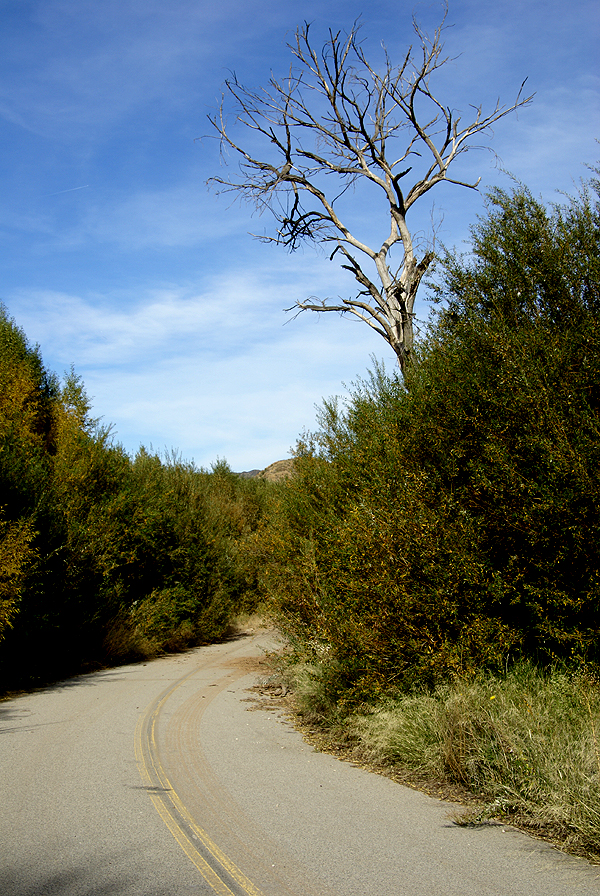When my daughter came home from college for Thanksgiving last week, I had plans to do some caching east of Riverside, then work my way over to Orange County  by way of Hwy 74, the Ortega Highway, into Orange County, then up to where she would end up at her friend's house in Orange. I told her to keep me informed on where they were, so I could gauge when I should start making my way over to the OC.
by way of Hwy 74, the Ortega Highway, into Orange County, then up to where she would end up at her friend's house in Orange. I told her to keep me informed on where they were, so I could gauge when I should start making my way over to the OC.
Since I was on vacation, it was a lazy kind of day, and I slept in and I finally got on the road around 8 in the morning, heading over to south of Grand Terrace to get a neat little virtual in Hunter Park. The park has what looks to be a quarter sized railroad train running around various parts of the park. The width of the track looking to be about 6 inches. If you go to the cache page, you can see the train at the depot in the park. The trains run on two Sundays each month giving free rides, so they can't be all that small, but the size of the tracks give you the illusion they are smaller than they must be. Either way, it looks like it would be fun day to spend with small children.
Not having any children with me, I just walked the line getting over to ground zero where I got the requisite information and I was on my way again. I took the long way around, parking in the main parking lot of the park and then walking almost a quarter mile to get to ground zero. Had I been thinking, I would have stopped and parked at the north part of the park where I drove within 130 feet of ground zero. It was a nice day though, so the walk was enjoyable. I decided to stay along the rails which made the walk a little longer, but a lot dryer. The park was pretty well saturated from our recent rains we had right before Thanksgiving and to avoid the puddles,  I literally "walked the line."
I literally "walked the line."
After my walk, I headed back to the car and then headed south to March Air Reserve Base, which is the former March Air Force Base. There's a museum there, that I noticed on another trip has a virtual cache there, so I thought I'd stop and get that one. There's another virtual across the freeway at the Riverside National Cemetery that looked interesting, so I thought I might get both of them. The March Air Base Museum had many planes on display, both outside and then inside the museum grounds. People can park and see some of the exhibits, and then pay a small entrance fee to view the other planes and read about the history of the Air Force and see some of our country's flying machines. Outside the entrance to the museum are some very nice memorial displays for people to enjoy. This was where the virtual cache was placed.
To get credit for this cache, you had to answer five questions. All the answers were placed somewhere on the different memorials. It was a great way to get geocachers to pay close attention to some of the finer details of the monuments. As I was making my way around the memorials, however, my phone went off. My daughter was already in Castaic! What this told me was that I needed to hustle if I wanted to pick her up on time. Apparently, her driver doesn't know the meaning of a speed limit sign,  because he made very good time getting down from Stockton. At least my daughter gave him my warning to him. She told me that she had told him that I had two bits of information for him.
because he made very good time getting down from Stockton. At least my daughter gave him my warning to him. She told me that she had told him that I had two bits of information for him.
1. Drive safely.
2. My daughter is precious cargo.
He got her home in one piece, safely, albeit quickly and he also got her back up at the end in the same condition, so I'll not complain. I know that's the way young people do things. Heck, I even speed (but you didn't hear me say that).
Anyway, I figured I had time to get the rest of the information from this virtual, but I wouldn't have enough time to get to the Riverside National Cemetery virtual, so I guess that one will have to wait for another trip out there. The beauty of virtuals is they don't get muggled too easily. I also figure the next time I'm down at the cemetery, I'll come back to the museum and really do it right, paying my admission fee and enjoying it the way most people do, just as a visitor, not as a person on a mission to get some facts. I could see that it would be very interesting.
At that point, I also decided that it would be quicker to just take the major freeway through downtown Riverside, through the Santa Ana Canyon. The 91 freeway coming down this canyon would take me right into Orange County and drop me within about a mile of my daughter's friend's house. It would also take me right through the area that burned a couple of weeks ago in the "Freeway Complex" fire that, along with two other fires, destroyed well over 500 houses. I drove right past where the original fire started.
I could see right where the first rode up the first ridge and then down the next hill while also racing along the ridge, eventually destroying 95% of Chino Hills State Park. I could see where the first jumped the freeway, effectively closing down that freeway for a day. The ridges where the fire raced were blackened and I could see houses at the top of the ridge that survived. How terrifying it must have been to be living there and see the fires racing toward your house.  Every now and then, I could also see a burned shell of what was formerly a home.
Every now and then, I could also see a burned shell of what was formerly a home.
After getting off the freeway, I made my way to my daughter's friend's house. As I turned on to his street, I saw his car turn on to the street from the north end. Perfect timing. I thanked her driver for giving her a ride home, I gave him some gas money, which he was reluctant to take (that's a good sign of a polite young man in my opinion), we piled her stuff into my car and were on our way. Four days later, I drove her back down her so she could reverse the process. Her visit was way too short, but I know she'll be back in just a couple of weeks. While she's driving south then, I guess I'll just have to go out and do some more caching waiting for her to get home. That works for me.
Pictures were taken at the following geocache:
March Field Museum - by Bratpack

 California really is another planet. In some ways, I think he's right. Most of the country is locked up with snow, and while parts of California has had a lot of snow, I went caching in shirt sleeves yesterday. Not too many places in North America when one can go geocaching for an extended period of time on December 30th and not come back without a case of frostbite.
California really is another planet. In some ways, I think he's right. Most of the country is locked up with snow, and while parts of California has had a lot of snow, I went caching in shirt sleeves yesterday. Not too many places in North America when one can go geocaching for an extended period of time on December 30th and not come back without a case of frostbite. while the really cold stuff happens infrequently and isn't much of a bother either. I could just as easily be in Minnesota or Wisconsin as out here had my dad found a teaching job there instead of here back in 1961.
while the really cold stuff happens infrequently and isn't much of a bother either. I could just as easily be in Minnesota or Wisconsin as out here had my dad found a teaching job there instead of here back in 1961.
















































